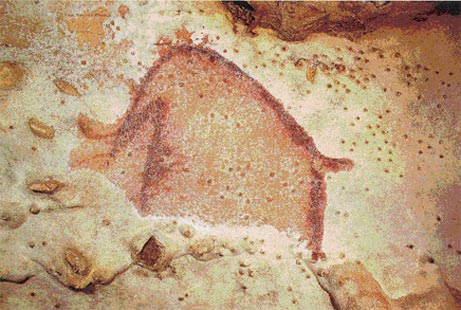The location for drawing stone paintings is chosen based on music
According to a new analysis of the Paleolithic caves in France, prehistoric people choose places with natural echoes to paint their famous cave sketches.
At at least 10 locations, the paintings of horses, bison and mammoths seem to coincide with converging, sounding and transforming places of human voices and instruments.
According to Iegor Reznikoff, an audio expert at the University of Paris, who conducted the study: 'Inside the cave of Niaux in Ariège, the most prominent paintings at Salon Noir resound, sounding like being in a La chapel. Code. '
So these areas are considered as a convergence of natural energy, supporting the theory that caves are decorated to serve religious and magical ceremonies.
Another interesting hypothesis that, according to Reznikoff admits, is that it is difficult to verify that the acoustic characteristics of caves contribute to the determination of which animals are painted on the cave walls. 'Perhaps the horses involved in the place have special sounds in some way.'
Reznikoff will present his latest findings this week at the annual meeting of the American Acoustics Community, Paris.

This mammoth drawing is in the most reverberant part of the main cave at Arcy-sur-Cure near Burgundy, France.(Photo: M. Girard / courtesy Iegor Reznikoff)
Arcy-sur-Cure is one of at least 10 areas where sketches in old stone caves gather at special reverberation points, showing a connection between painting and music in the suspects. Stone Age Ceremony
Critical position
The Reznikoff first noticed the strategic position of cave art when visiting Le Portel, an old stone age cave in France in 1983.
As an acoustics expert on 11th and 12th century churches, Reznikoff often hummed whenever he first entered a room to be able to "feel its sound".
He was surprised to find that in some of the portraits of Le Portel with animal paintings, his humming voice became significantly larger and clearer.
He told National Geographic News: 'Immediately this idea arises. Is there a link between the position of the paintings and the sound quality at the locations? '
Since then, Reznikoff has discovered the correlation between the location of paintings and the echoes of the surroundings in more than 10 old stone age caves throughout France with drawings ranging from 25,000 years to 15,000 years old.
In places where paintings are put together in caves, human voices are pronounced and songs and sutras will extend in space like endless echoes.
Paul Pettitt, an ex-stone art specialist at the University of Sheffield, England, who was not involved in the work, said Reznikoff's hypothesis could explain the confusing distribution of many paintings in caves. dynamic.
'In some caves, images gather together in certain areas. This seems to be a deliberate choice, not a coincidence, with many 'drawable' areas ignored, while in some cases the paintings are concentrated in reverberant regions. '
Artistic relationship
Ian Cross, director of the Center for Music and Science at Cambridge University, who was not involved in the work, said Reznikoff's hypothesis was 'interesting' and ensured a more detailed investigation.
'What he has just done clearly implies that there is a basis for more carefully conducted research including detailed audio measurements.'
Pettitt, an archaeologist at Sheffield University, said Reznikoff's research is consistent with other work that music and dance play an important role in the lives of ancient people.
Bone-like flute instruments or 'roarer' - ivory instruments and bones sound whirring in rhythm when rotated - also found in caves with drawings.
In rare cases, the cave paintings include women who are dressed in fancy costumes like dancing or mysterious looks, drawings of witches half-beasts who are participating in transformative dances. .
'Therefore there is an artistic connection between dance and painting. Perhaps in this case painting is recording religious events. It's hard to believe that those rituals take place in stillness. '
- Discovered a 2,500-year-old gay painting on stone
- Spain discovered dozens of paintings on rock dating back to 14,000 years
- The oldest rock painting on Pharaoh in Egypt
- Amazing 3D paintings
- Microorganisms 'draw' pictures
- 10 incredible pencil-drawing pictures
- The secret to keep drawing people and tattooing.
- The true meaning of world famous paintings that most of us do not know
- Video: Painting dragon with just one stroke
- Juice machine to music
- Discovered the
- Why will the real drawing class make you feel more optimistic?
 Discovered an ancient centipede fossil 99 million years old
Discovered an ancient centipede fossil 99 million years old Discovered bat-like dinosaurs in China
Discovered bat-like dinosaurs in China Discovered a 200-year-old bronze cannon of the coast
Discovered a 200-year-old bronze cannon of the coast Discover 305 million-year-old spider fossils
Discover 305 million-year-old spider fossils